6 Goal-Oriented Content Marketing Strategies You Need to Be Using
by Ana Gotter • October 17, 2018
A quick look at most business websites will quickly reveal that many feature a prominent “blog” title somewhere in their navigational menu. We’ve come a long way from the days when blogging meant publishing bad poetry on WordPress.com.
Today, content marketing is a valuable tool that businesses can use to drive traffic to their site, generate leads, establish relationships with clients, and more. If you want proof, you can read about how we did it for our own business here.
Content marketing can do a lot. There’s no doubt about that. But it’s not going to do much if you don’t set specific goals and create strong plans and strategies in order to accomplish them. Content marketing without strategies is like going to the grocery store for the week with no meals planned—you’ll come home with a cart full of groceries, only to realize that you barely have enough cohesive ingredients to maybe make two real meals.
Writing, research and the topic selection isn’t easy, but for most brands, it’s the actual content strategies that are difficult. There’s plenty of strategies that you can implement when it comes to content marketing, but in this post we’re going to take a look at 6 specific goal-oriented content marketing strategies and how to use them to accomplish specific things.
1. Optimize Content Fully
All content should be well optimized for SEO so that you can improve your SERPs and get more traffic to your site. Even if you’re focused on other goals, I always advise clients that we treat SEO as a “secondary” goal to all content, if it’s not the first goal outright. And sometimes it will be—sometimes we write posts exclusively for the SEO benefits, and as long as the post is well-written, informative, and contributes to our brand and reader relationships, that’s still a great call.
Some people, however, just pick a keyword and then hope it all works out. In addition to selecting great keywords, you’ll also need to make sure your content is optimized for that keyword.
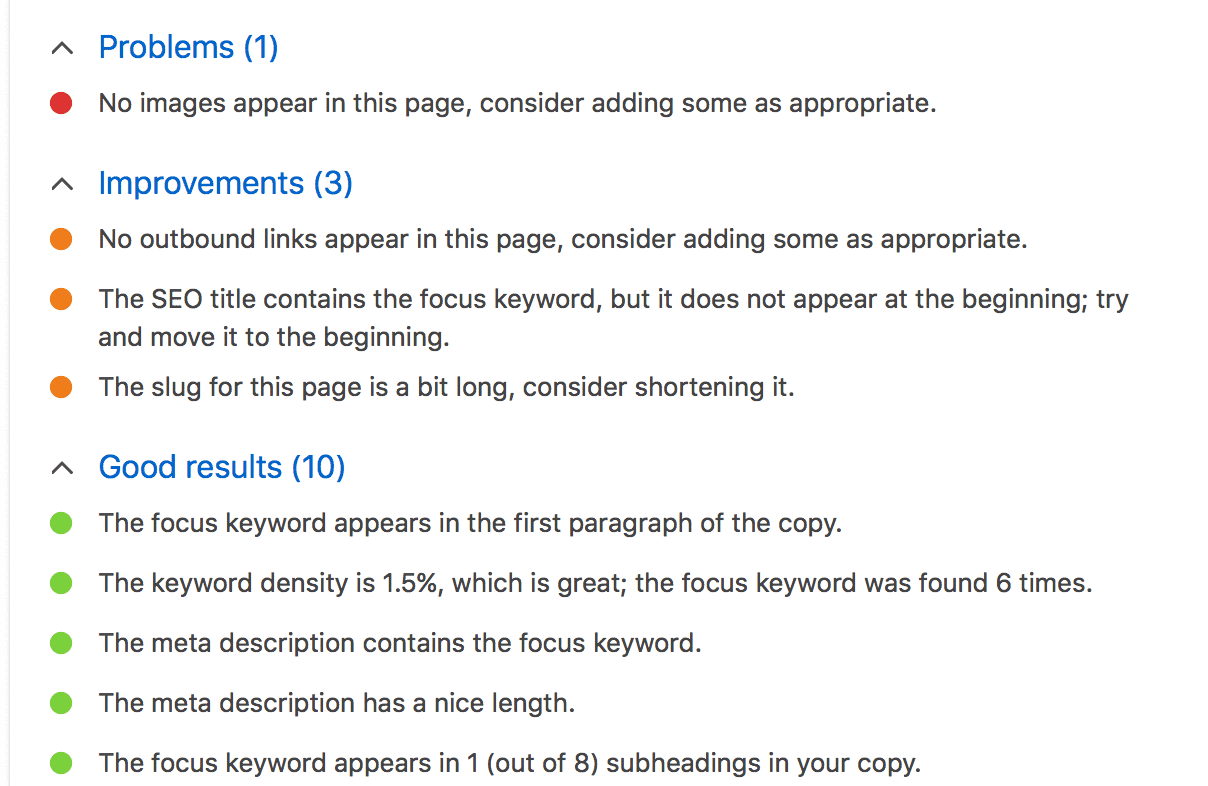
Here’s how to do that:
- Use tools like Yoast SEO to help you track how well your optimization efforts are going. It will provide specific feedback.
- Include images in your post, and add the keyword to its alt text.
- Place your keyword in at least one subheading, your title, and the first paragraph if possible.
- Link to outside relevant, credible content, and use internal linking to your own.
- Target multiple keywords when possible, as it will help you appear in more searches.
- Include .SRT files to any video content; they provide closed captions to users who need them, but the SEO benefits of being crawlable by search engines is crucial to showing up in more searches
2. Utilize Multiple Distribution Methods For More Traffic
Getting more traffic to the site—no matter where it comes from—is one of the most common reasons people come to me wanting to start content marketing. And, in order to truly maximize potential traffic, you need to be actively distributing your content. Relying on SEO alone isn’t going to work, especially if your site is getting started.
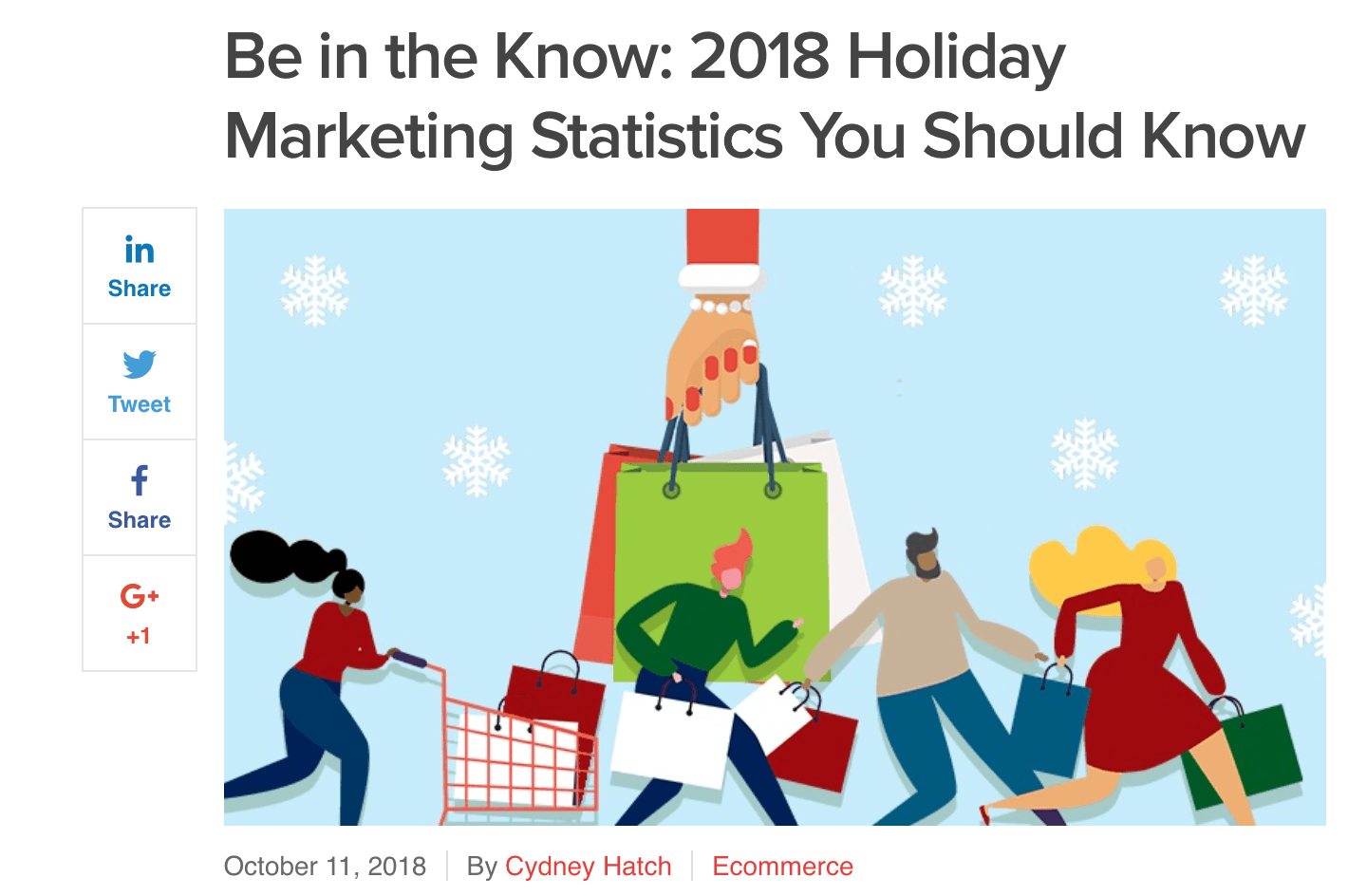
There are a number of great distribution methods available that aren’t SEO. These include:
- Sharing your content on social media. This puts your content in front of a warm audience, and if it gets shared on-platform, they’re introducing you to new potential audience members with a hefty helping of social proof. When posting on social media, explain why the content is valuable in the description instead of just dropping the title in the update box and hitting “post.”
- Run Facebook or Twitter ads promoting your content. It should be informational instead of promotional, but this is a great way to increase traffic and build up a subscriber list.
- Create cohesive content plans. Create a YouTube video that aligns with a blog post, which aligns with a Facebook Live or a webinar. This allows you to send interested users to different locations, and ultimately back to your site.
- Guest post on other credible sites. You typically get at least one link back to your own non-promotional content, so this can send huge numbers of relevant users to you. It also gives you backlinks, which helps SEO.
- Email relevant content to your audience. Most subscribers won’t want to receive an email notification every time every post goes live, but sending them a list of recent posts or an email with an important post can be well-received. Again, you have a warm audience so this can work well.
3. Establish Credibility with Expert Posts
Building credibility and trust is an excellent goal for content marketing and a great way to do that is with what’s sometimes called “expert posts.” These posts feature advice from known influencers in the field and are even more powerful when you have advice and actual quotes from multiple experts. It shows that you have industry connections and that your publication may be important enough to get a quote from someone of that caliber.
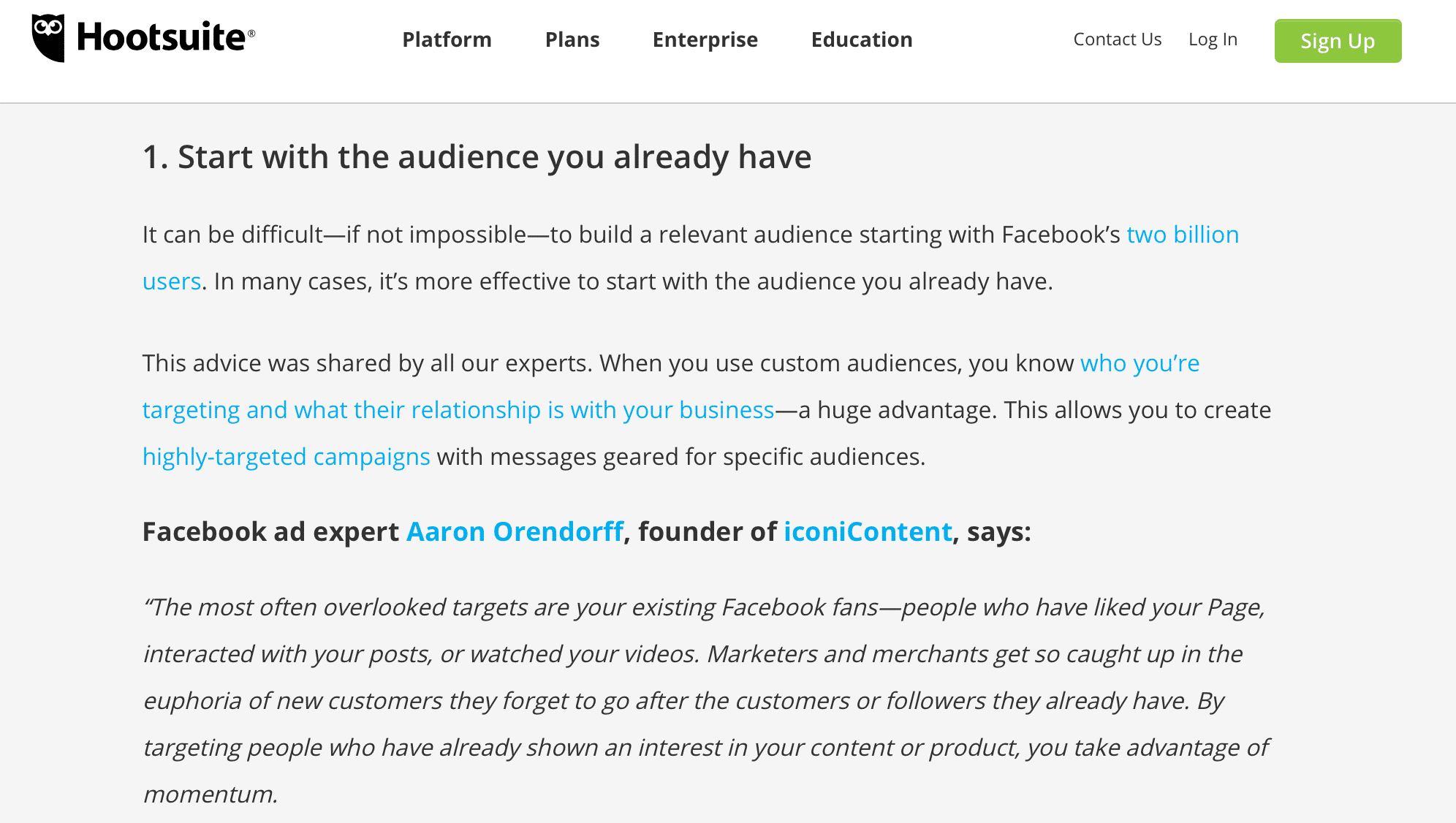
Even if you aren’t able to get direct quotes from individuals, you can quote them on a small passage from their of their posts and speeches. Make sure you credit them and link to their site. This still gives you the benefit of establishing industry connections and shows that you’re following credible people. It also can put you on their radar and they may be more likely to share your content. This gets you more traffic, but it also gives you some credibility, too.
4. Boost Lead Generation with a Lead Magnet Funnel
If a random person walks up to you on the street and asks for $100, do you give it to them? Probably not. But if one of your best friends or family members asks the same thing, you’re a lot more likely to say yes.
Lead generation works the same way. Because of this, lead generation funnels are the way to go with content marketing.
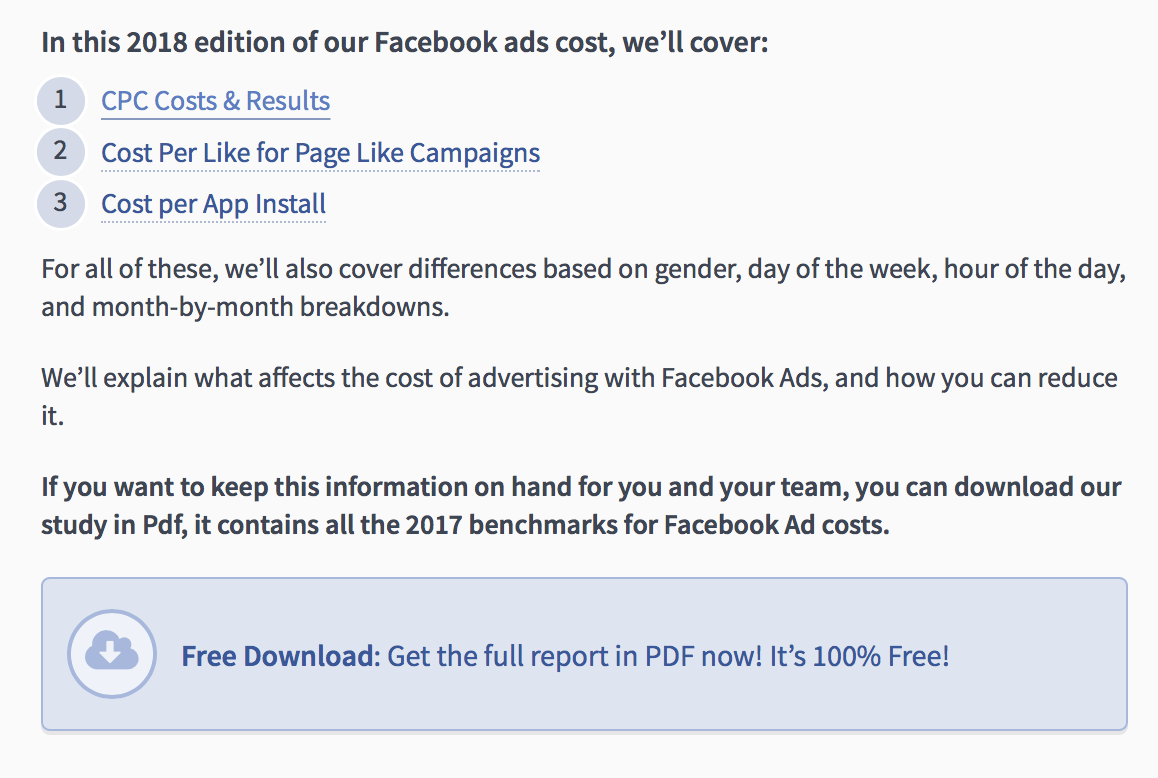
Start with the lead magnet that you want to promote. For this example, we’ll use a webinar about how plant-based diets can improve health and how to incorporate them more often. Go ahead and create the webinar and know what it covers and who your audience is.
Next, create a list of relevant blog posts and/or YouTube videos that are connected to this topic. Examples might include:
- 6 Plant-Based Dessert Recipes You’ll Love
- The importance of increasing plant-based foods in your diet
- # Natural Superfoods to Have In Your Pantry
You could funnel users from one blog post to the next, and then—after they trust you and are familiar with your brand and your content—you get them to sign-up for your webinar. Place CTAs to sign up for your webinar in each these posts and use interlinking to keep people bouncing around until they’re ready to do so.
5.Get Sales By Providing a Solution to Question Keywords
Plenty of businesses start content marketing with the ultimate intention of getting more sales. That’s what we all want, right?
In order to do this effectively, one of the best strategies that I use is to target question keywords at different levels of the sales funnel.
In order to find question keywords, I use SEMrush’s Keyword Magic Tool. They have a feature that lets you only see keywords if they indicate a question.
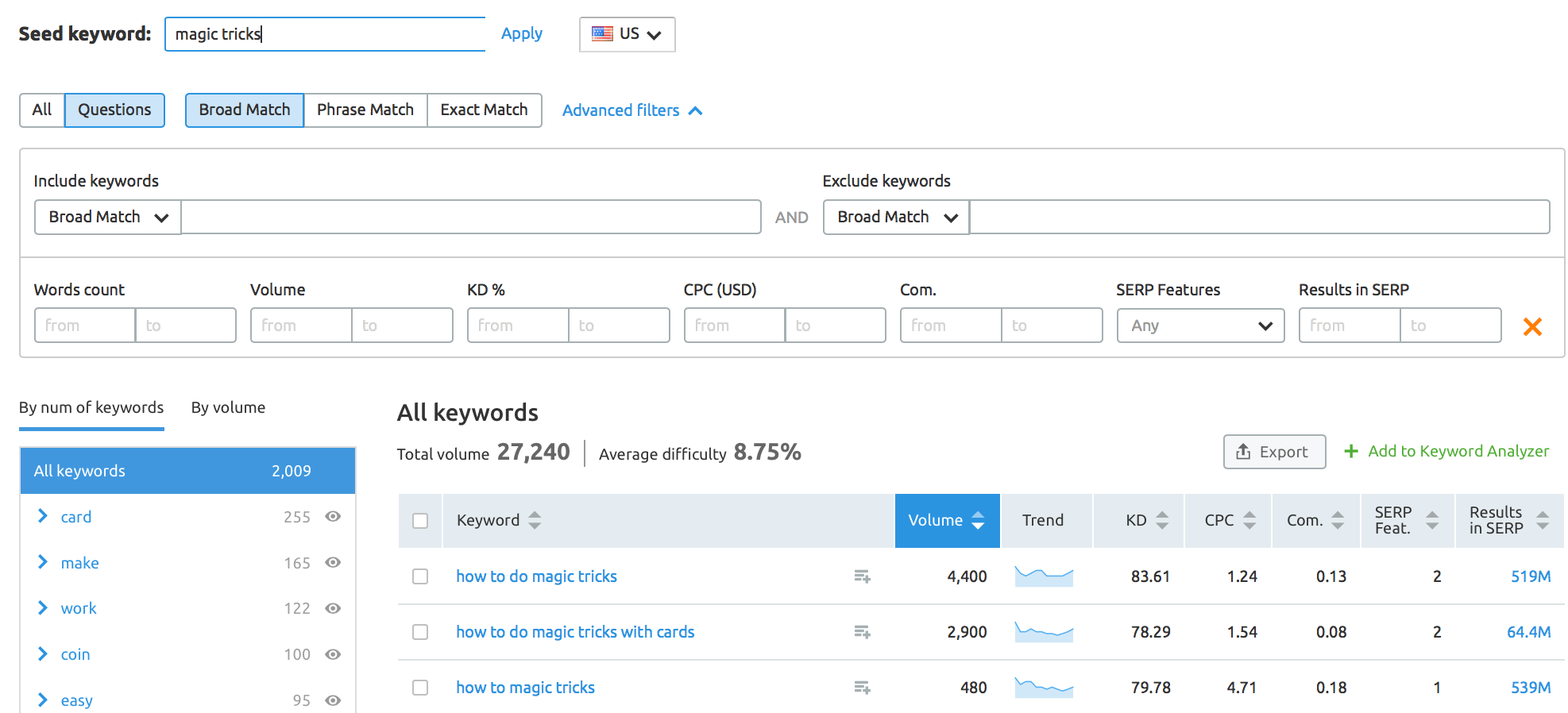
Let’s say you sell athletic apparel. It’s a competitive space, so you need to be smart with your marketing strategies. Different question-based keyword topics you might write about include:
- How to take care of athletic clothing? At the end of the post, stress getting high quality clothing that holds up to standard care (like yours!).
- When is it time to buy new gym clothes? Explain why you need to replace clothes frequently and cite legitimate concerns like “they could get thin and show more than you want when you squat” or “all that bacteria!” Then, offer a link with a potential discount or free shipping for users who need to upgrade their wardrobe.
- What should I wear to kickboxing (or yoga/spinning)? This is a more high-intent search, where potential kickboxers/yogis/spinners are looking for help on what to wear so they don’t show up looking as clueless as they feel. They likely need to purchase these items and are intending to do so—you just need to make sure they buy your clothes. Offer informational posts, links to your products at the end and reasons why those clothes are perfect for their needs. Write a distinct post for each type of sport, because they’re all different keywords.
This works because it establishes trust, demonstrates value and then immediately offers your product as a solution to a problem they’re having right now.
6. Increase Retention With Well-Timed Informational Posts
The content that you can create can actually help to increase customer retention and—if done correctly—can actually help with reengagement, too.
Writing content that is strictly informational explaining why regularly interacting with your product or service is important is a good call here. A lot of people will typically hire a professional or buy a subscription product or service only once or twice, then figure they’re good until there’s dire evidence they need it again.
Split testing is an example in the marketing world. A lot of people like to run one split test and leave it at that, while it should be a more ongoing thing.
A great example of how to execute this is the blog post below. A “home comfort” servicer wrote a post explaining why it’s important to maintain your AC regularly—even if you don’t think there’s anything wrong. Since this is a service they offer, it’s a great way to get more clients calling them for services they wouldn’t have otherwise.

Regular customers may see this on their own, but your best bet for retention and reengagement is to distribute content like this through email or an focused retargeting campaigns on Facebook Ads. Show AWOL customers an ad with this as the content, and you’ll see more calls or sign-ups or purchases quickly.
3 Content Marketing Strategies You Should Always Use
In addition to the specific strategies discussed above, there are also three things you should always do in every piece of content you create, whether it’s a blog post or a video or a webinar.
- Always include some sort of CTA. This can be “sign up for our newsletter” or “leave us a comment.” Your CTA should be aligned with the goal you’re focusing on and it should make sense in context of the content itself.
- Have a specific goal in mind for each piece of content. As you can see above, a single blog, YouTube channel, newsletter, or even webinar can be used to accomplish multiple goals. The key to doing this successfully is to have a specific and singular focus for each piece of content. You can still optimize a lead-gen post for SEO, but you want to remember that getting traffic to that lead magnet is the goal instead of getting lots of comments on that post.
- Distribution is key. We talked a lot about distribution methods above, but it’s still important—no matter what your goals are—so we’re mentioning it here, too. Don’t just sit back and hope people find your content. In addition to switching it up, you should also track your referral traffic in Google Analytics to see which sources are actually working for you best.
Conclusion
If you want to actually accomplish specific goals, you need to put strategies in place to optimize for them, encouraging users to take certain actions. This is the only way to ensure that you’re putting steps in place to actually take you where you want to go. A blog may be full of valuable content that very well could help you get leads, but if you don’t have a CTA to those webinars or that eBook, what’s the point?
It’s essential to choose the goals that you want to optimize for before you start working on the actual marketing. If you haven’t done that yet, pause and head back to the drawing board so you can decide exactly how you want your content marketing to work for you.
What do you think? Do you use any of these strategies? Are there any others that you use that we left off our list? Share your thoughts and questions in the comments below!




